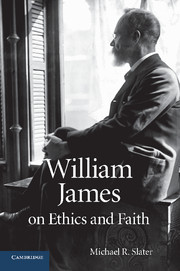Introduction: a practical faith
Published online by Cambridge University Press: 03 February 2010
Summary
Our faculties of belief were not primarily given us to make orthodoxies and heresies withal; they were given us to live by. And to trust our religious demands means first of all to live in the light of them, and to act as if the invisible world which they suggest were real. It is a fact of human nature, that men can live and die by the help of a sort of faith that goes without a single dogma or definition.
“Is Life Worth Living?” (1896)Faith thus remains as one of the inalienable birthrights of our mind. Of course it must remain a practical, and not a dogmatic attitude. It must go with toleration of other faiths, with the search for the most probable, and with the full consciousness of responsibilities and risks.
Faith and the Right to Believe (1911)In Part XII of Hume's Dialogues Concerning Natural Religion (1998), Cleanthes asserts that the proper office of religion is to enforce “the motives of morality and justice,” and that when it “distinguishes itself, and acts as a separate principle over men, it has departed from its proper sphere and has become only a cover to faction and ambition.” Only a philosophical or rational religion avoids such excesses, Philo replies, but it is not relevant to practical life. The Dialogues concludes by leaving us with a choice: between an intellectually credible but practically irrelevant type of faith, on the one hand, and a practically relevant but vulgar and even vicious type of faith, on the other hand. (The unstated third option, of course, is not to believe at all.)
- Type
- Chapter
- Information
- William James on Ethics and Faith , pp. 1 - 16Publisher: Cambridge University PressPrint publication year: 2009



